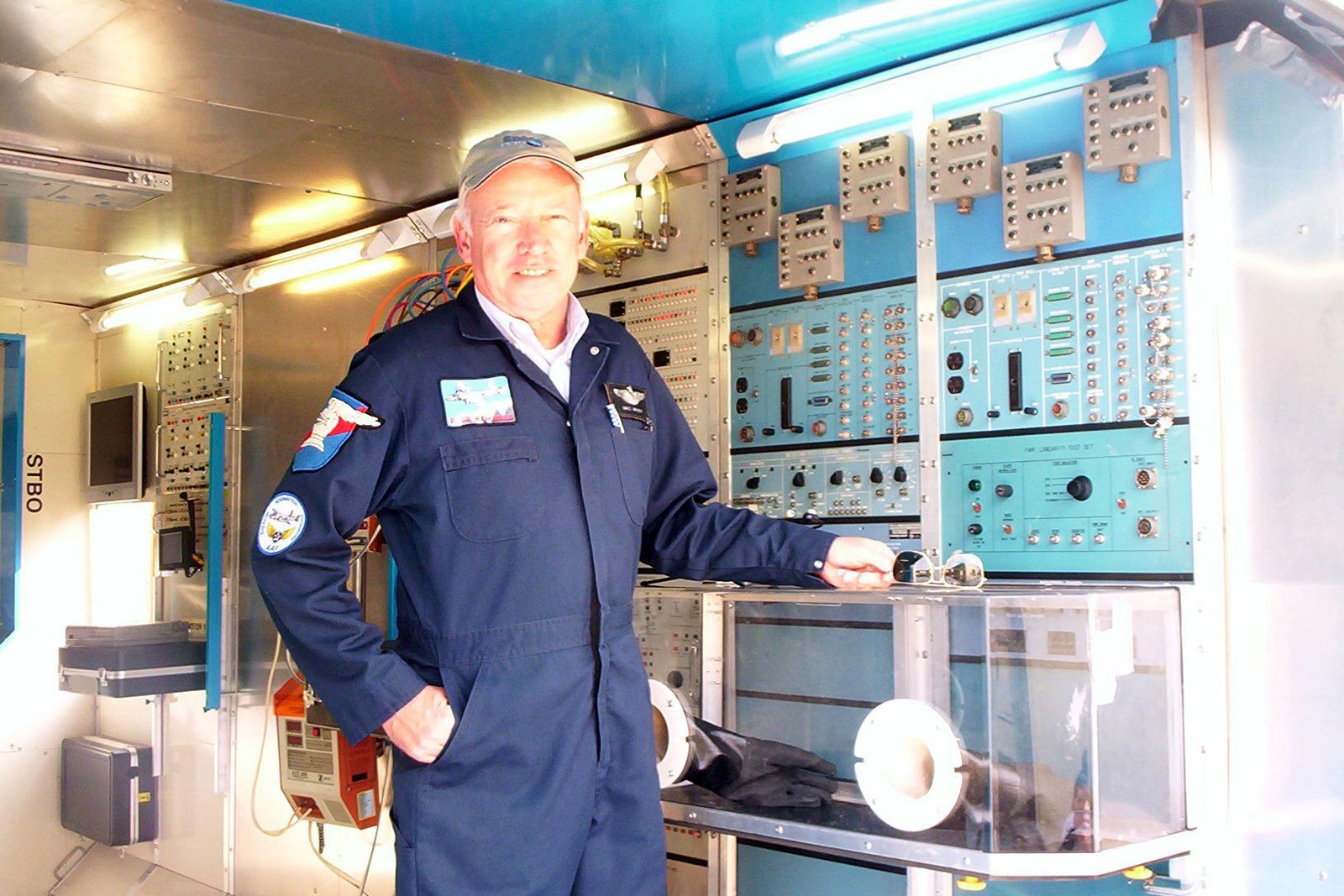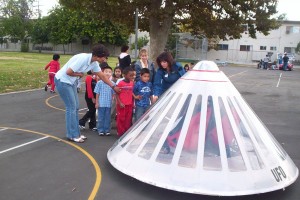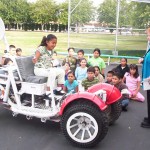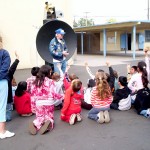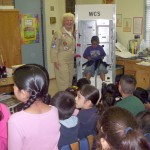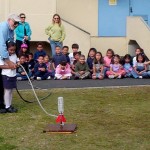By Fred “Crash” Blechman
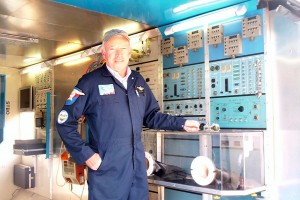
With the help of Chuck Kamphausen, students measured heart rates and performed other tests in a 16-foot-long mock-up of a module that could be part of the International Space Station.
On October 13, 600 students from Winnetka Avenue Elementary School, Canoga Park, Calif., were immersed in exhibits provided by the Traveling Space Museum. The childrens’ involvement and obvious interest—and the uniqueness of the exhibits—certainly increased their knowledge of space exploration. This could easily have been a turning point for many, leading them toward an interest in science and aviation.
From 8:40 a.m. to 2:15 p.m., the students and their teachers participated in 15-minute sessions conducted by informative volunteers. The sessions took place at various locations on the playground and in classrooms. The schedule, determined by the school principal, Maria Villasenor, and Ivor Dawson, president of the Traveling Space Museum, worked flawlessly, and allowed each class to participate in almost all the exhibits.
The museum has conducted several Space Days. The Los Angeles School District is considering including the Traveling Space Museum as part of science curriculum.
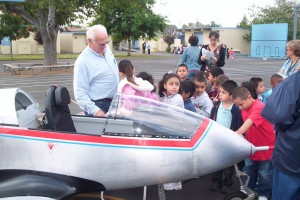
John Lewis helps children climb into a kit-built BD-5J tiny jet. They were allowed to operate the rudder, elevator, flaps and landing gear.
“We take over the school for the entire day and bring up to 17 exhibits—ranging from a full-size controllable BD-5J MicroJet kit to a space toilet simulator,” Dawson said. “We have a UFO that the kids can sit in, a water rocket demonstration, a space laboratory module, a mission control console and a half-scale Wright Kite.”
The museum also wows students with a full-motion flight simulator that looks like a space shuttle.
“Try to teach a second grader pitch, yaw and roll, and you see their eyes rolling!” he said. “With a flight simulator that they can sit in and control, they instantly understand the difference between pitch and roll.”
Many of the volunteer guides were pilots from the San Fernando Valley Chapter of the Ninety-Nines, an international organization of women pilots. Ceci Stratford helped children strap themselves into the Waste Containment System, a replica of the space shuttle toilet, and described how it works. Nina Yates had the children slip their feet into spring-operated “antigravity boots” that simulated a moonwalk in one-sixth gravity.
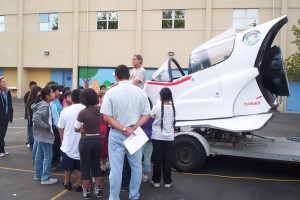
Gary Velligan described the meaning of pitch, roll and yaw, before allowing students to get into a full-motion Orion crew return vehicle simulator and use the joystick.
Using monitors and wireless headsets, Bertie Duffy demonstrated teleconferencing between Mission Control consoles and the 16-foot long Odyssey III mobile space lab. Anne Marie Radel guided children in and out of a two-seat space capsule model, Lilian Darling Holt had several children dress in spacesuits and Heidi Widoff described the various types of space foods astronauts use.
Terry Lyn Olson demonstrated a working lunar rover utility vehicle, Chuck Kamphausen operated the various devices in the Space Lab and Gary Velligan let the students “fly” the hydraulically-controlled Orion crew return vehicle. Patrick Fahey used lights, buzzers and multiple-choice space questions to play Astro-Jeopardy with the children and Ed Moreno helped them fire off water rockets, using a water hose to create pressure in a finned plastic bottle.
Plenty of excitement remained. Jack Craigie used an overhead projector to show photos of his experience as an Air Force test pilot. Utilizing a one-half size model of a Wright Kite, Ferd Kuhn described how the Wright brothers developed a wind tunnel and propeller to make the first heavier-than-air powered flight more than 100 years ago. Palmer McBride described space probes and satellites, with the help of a full-scale model of a Pluto probe.
School librarian Anita Persoff profiled famous women of flight, including aviation pioneers Amelia Earhart, Harriet Quimby and Bessie Coleman. John Lewis and Tom Smalley let some children climb into the cockpit of the BD-5J, a tiny jet featured in a James Bond movie, where they could control the rudder, elevator and flaps, and even raise and lower the landing gear.
Remarkably, all the Traveling Space Museum exhibits fit into two large vehicles, and can easily travel wherever young minds are open to the possibilities of space and science.”
For further information, contact Ivor Dawson, at 310-279-2624, or visit [http://www.travelingspacemuseum.org].
- Terry Lyn Olson demonstrates a working lunar rover utility vehicle.
- Palmer McBride, who spent many years working for NASA, describes a full-size Jet Propulsion Lab model of a Russian Pluto probe.
- Ceci Stratford used a model of a waste containment system to demonstrate how astronauts go to the bathroom in space.
- Nina Yates straps spring-loaded antigravity boots onto a student. Walking on these boots is like moonwalking.
- Ed Moreno helps a student launch a water rocket powered by a garden hose.











